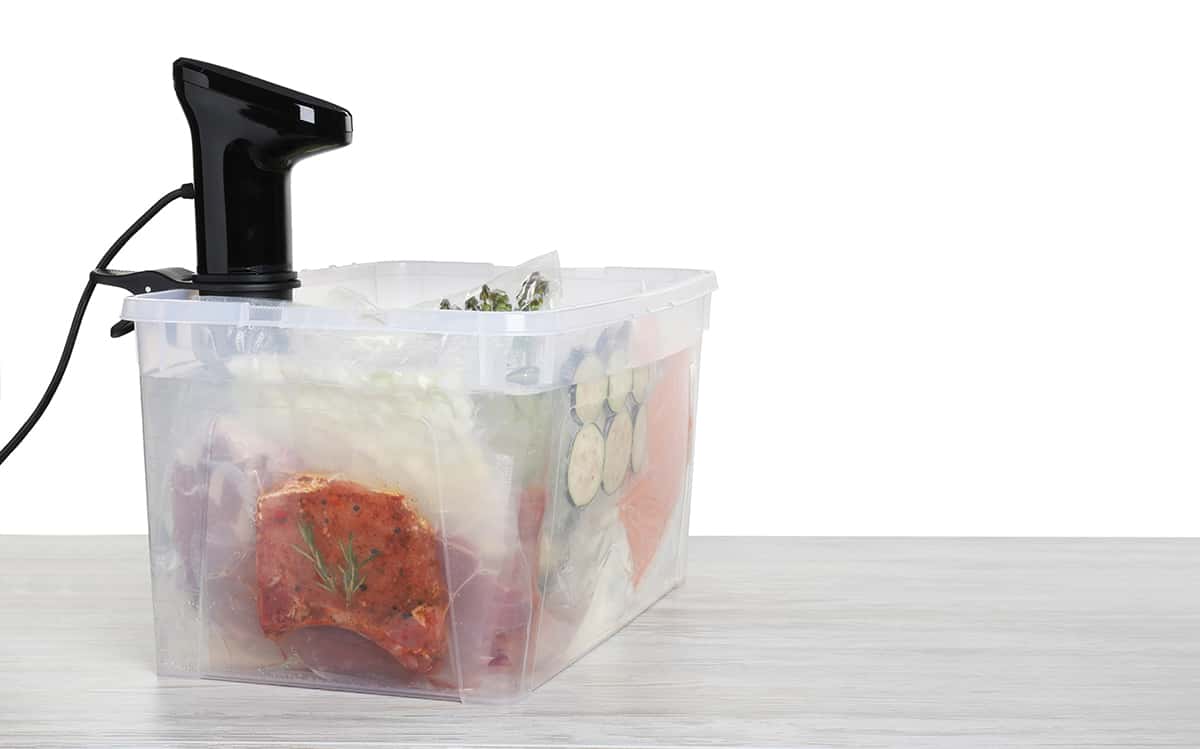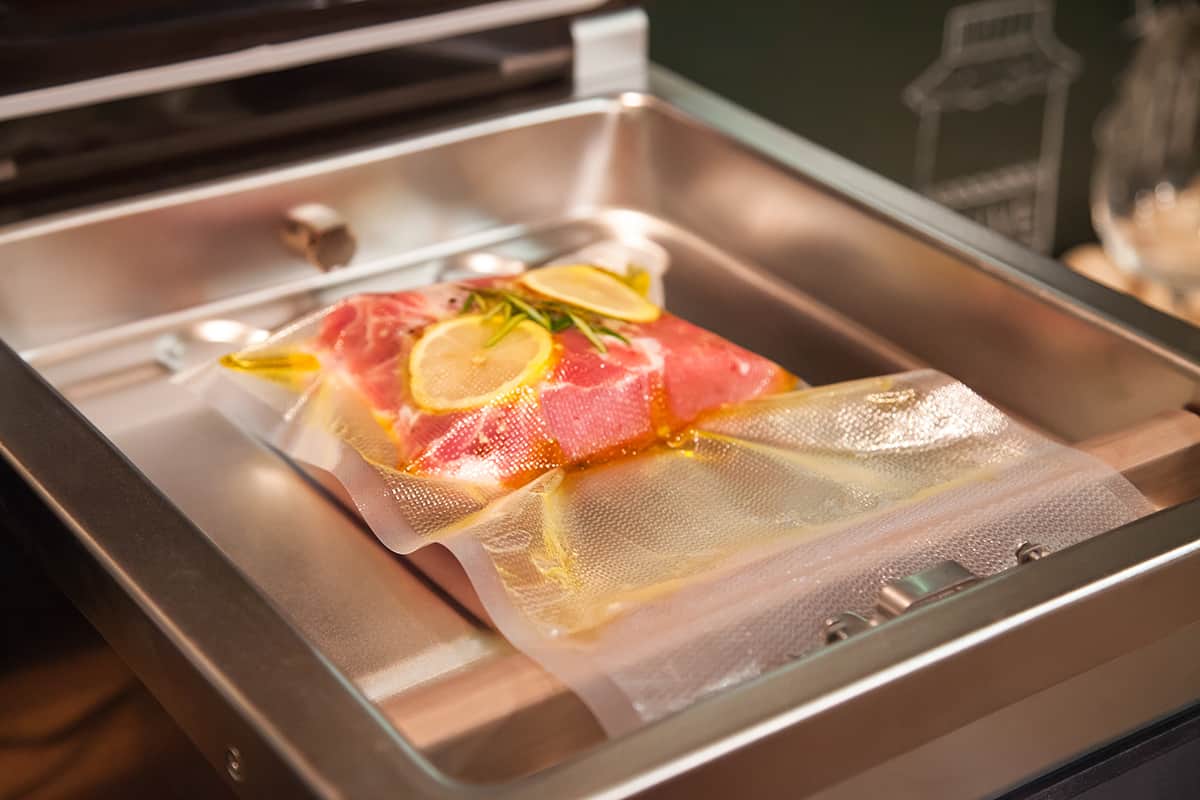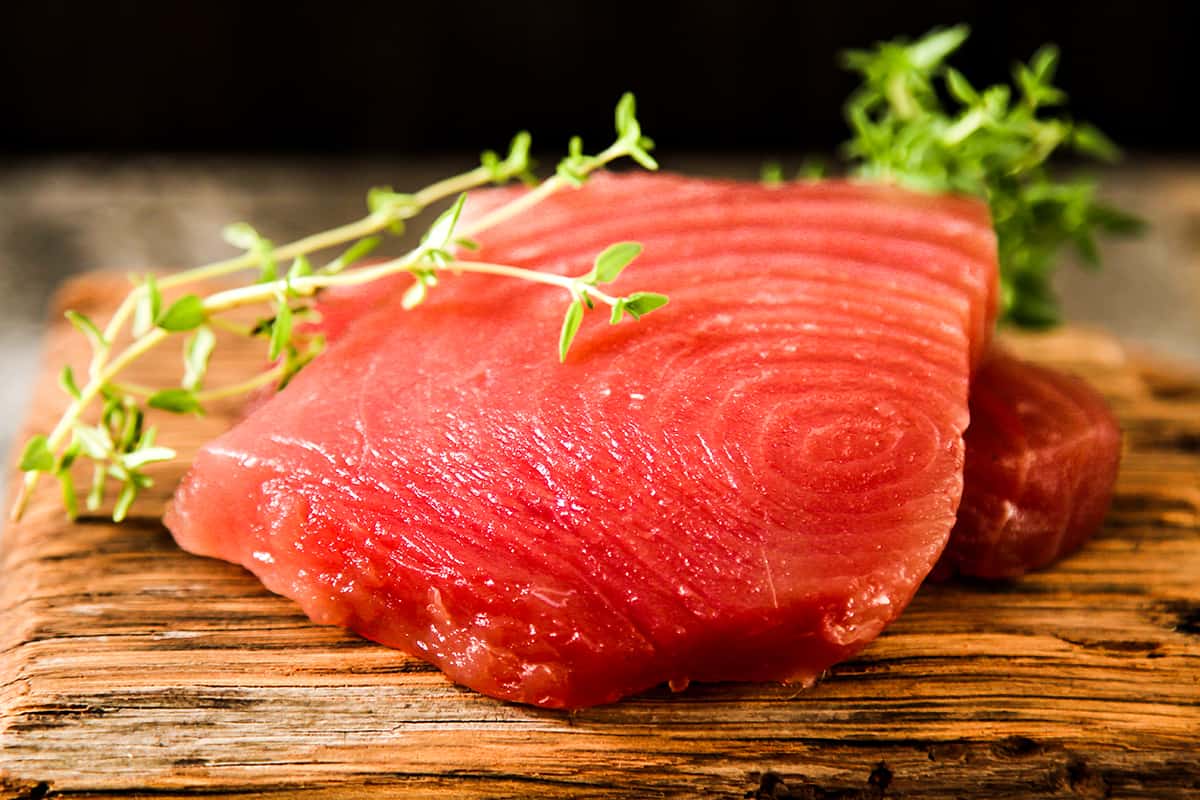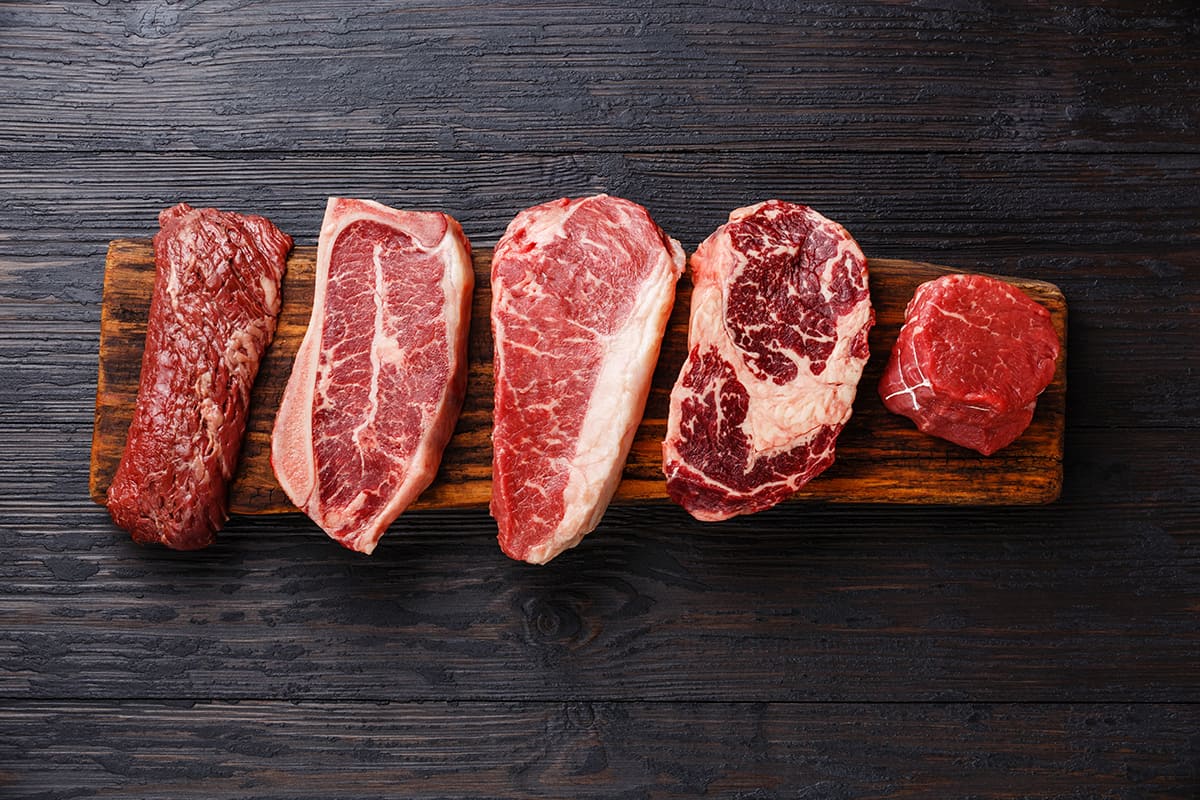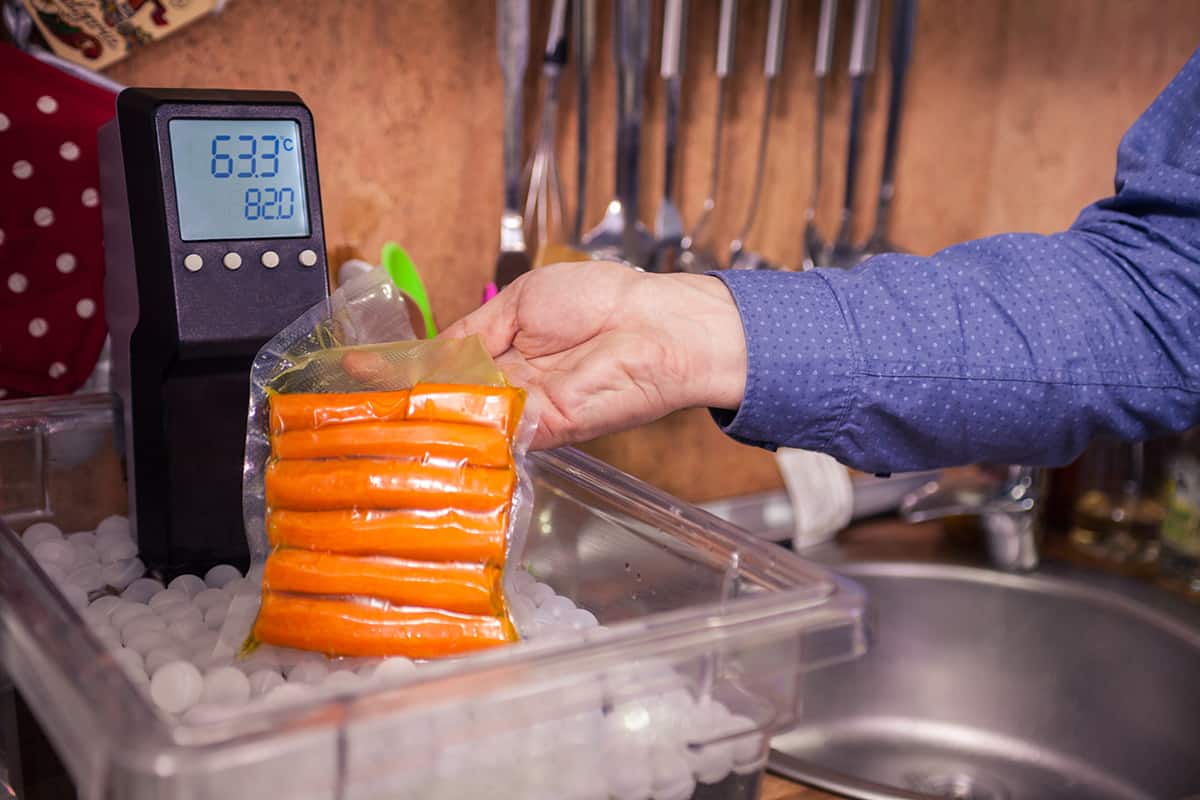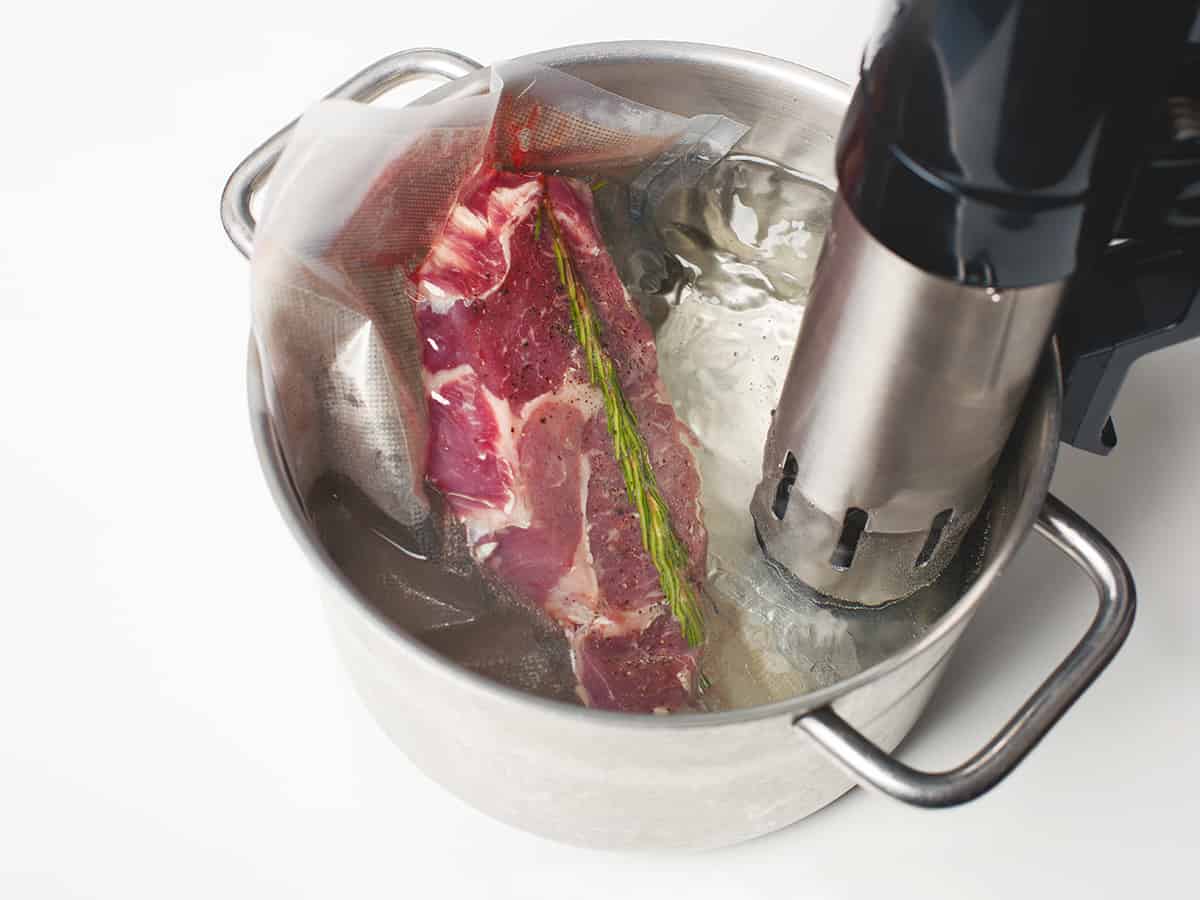Have you had enough of undercooked or overcooked food? I’d like to introduce you to sous vide, a revolutionary cooking method that will make you the envy of all your friends who enjoy cooking. Sous vide makes it impossible to scorch your food during cooking. Close it up, turn the heat on, and the water will do the rest.
Of course, you’ll need to master the art of sous vide cooking before you can whip up foods that please your dinner guests’ tastebuds. To help you with this, I’ll provide you with a comprehensive guide on sous vide cooking times and temperatures.
What Is Sous Vide Cooking?
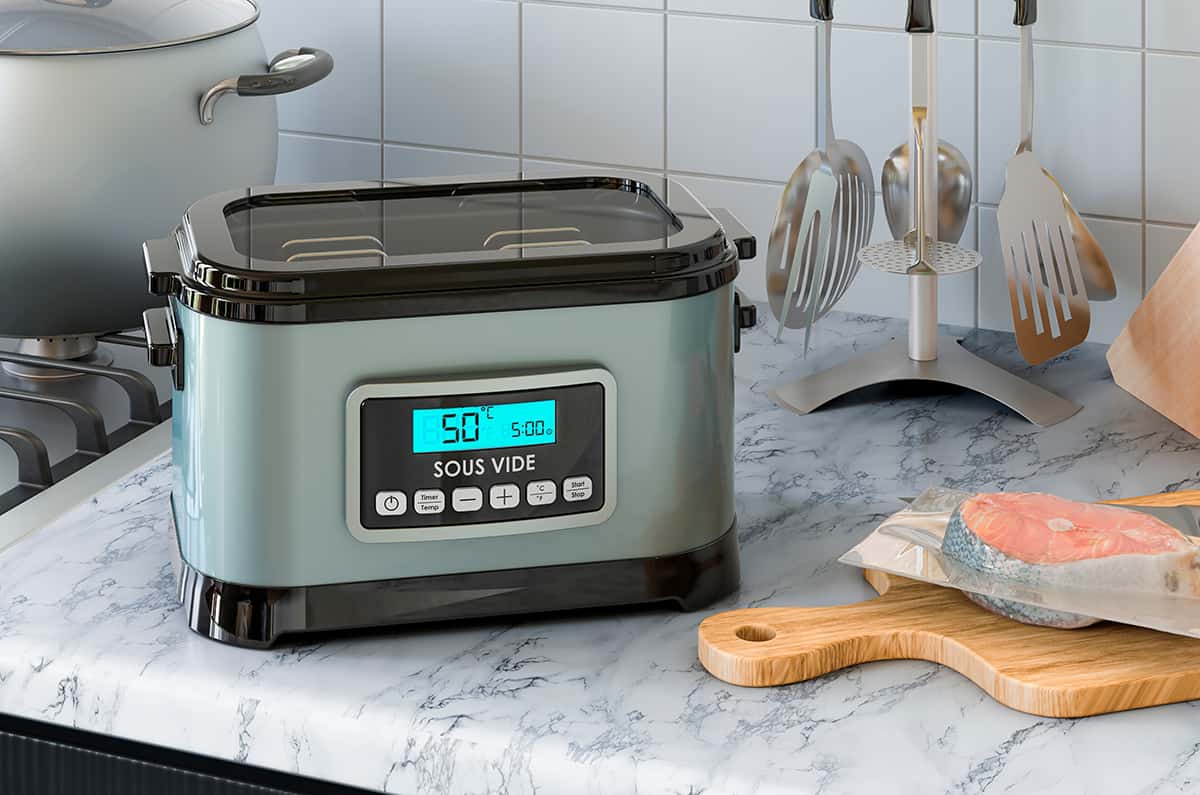
The term “sous vide” refers to a cooking technique in which food is prepared by placing it in a vacuum-sealed bag before being submerged in a water bath heated to a specific temperature. In French, sous vide literally means “under vacuum.”
Sous vide cooking’s main advantage is the ability to precisely regulate the cooking time and temperature, guaranteeing perfectly done meals every time. Overcooking and undercooking are almost impossible when food is cooked in a water bath at a constant temperature. To top it all off, the food’s natural flavors and nutrients are preserved thanks to the vacuum-sealed bag.
Flexibility in timing is another benefit of sous vide cooking. To avoid drying out or overcooking, food can be left in the water bath for much longer periods of time when slow cooking. Sous vide cooking is convenient for those who need dinner to be ready at a certain time but don’t have the time to keep an eye on it.
Sous vide is a flexible and convenient cooking method to achieve perfectly cooked meals with minimal effort. You can benefit from learning the sous vide cooking method whether you’re an experienced cook or just starting out.
What Can You Cook Sous Vide?
You can cook a wide variety of foods using the sous vide method, including:
- Meat— Steaks, roasts, and other cuts of meat can be cooked to perfection with the sous vide technique. Tougher cuts of meat, like brisket or short ribs, can be cooked to tender, juicy perfection in this method.
- Eggs— Sous vide cooking allows for eggs to be cooked to any desired consistency, from runny to hard. Poached eggs for eggs benedict are just a couple of the recipes that benefit from its versatility.
- Fish and seafood— Fish and seafood cooked sous vide turns out flaky and juicy, just the way you like it. Furthermore, shellfish like lobster and scallops can be cooked to perfection in this method.
- Poultry— Chicken and other poultry-cooked sous vide comes out juicy and flavorful every time. You can also use it to roast turkeys and other large birds so that they come out juicy and tender every time.
- Vegetables— A wide range of vegetables, from root vegetables to leafy greens and cruciferous vegetables, can be cooked successfully in a sous vide apparatus. This method of cooking allows the ingredients to retain their original flavors and textures while still becoming perfectly tender.
- Fruits—Fruit, like pears or apples, can be cooked sous vide until they are tender and juicy. It’s also great for baking apples or poaching pears to use in desserts.
- Desserts— Creme brûlée, panna cotta, and chocolate lava cake are just a few of the desserts that benefit from the precision and control of the sous vide method.
Sous Vide Cooking Time & Temperatures Chart

Now, let’s go to the heart of the matter: the cooking time and temperature to prepare your sous vide meats and vegetables to perfection. Please note that the figures below are general estimates and may differ based on a variety of factors, including humidity, altitude, and how large a water container you use.
Sous Vide Cooking Time & Temperature Chart for Meats
| Food item | °F | °C | Cooking Time |
| Beef brisket | 165 | 74 | 24 to 72 hours |
| Beef chuck roast | 160 | 71 | 24 to 48 hours |
| Beef pot roast | 160 | 71 | 24 to 48 hours |
| Beef ribeye | 130 to 135 | 54 to 57 | 4 to 8 hours |
| Beef roast | 130 to 135 | 54 to 57 | 4 to 12 hours |
| Beef short ribs | 165 | 74 | 48 to 72 hours |
| Beef sirloin | 130 to 135 | 54 to 57 | 4 to 8 hours |
| Beef stew meat | 160 | 71 | 8 to 12 hours |
| Beef tenderloin | 130 to 135 | 54 to 57 | 4 to 8 hours |
| Steak (rare) | 120 to 125 | 49 to 52 | 1 to 3 hours |
| Steak (medium rare) | 130 to 135 | 54 to 57 | 1 to 3 hours |
| Steak (medium) | 140 to 145 | 60 to 63 | 1 to 3 hours |
| Steak (medium well) | 150 to 155 | 66 to 68 | 1 to 3 hours |
| Steak (well done) | 160 to 165 | 71 to 74 | 1 to 3 hours |
| Veal | 145 | 63 | 4 to 8 hours |
| Chicken breasts | 140 to 145 | 60 to 63 | 2 to 4 hours |
| Chicken breasts (bone to in) | 140 to 145 | 60 to 63 | 4 to 6 hours |
| Chicken cutlets | 140 to 145 | 60 to 63 | 2 to 4 hours |
| Chicken drumsticks | 140 to 145 | 60 to 63 | 2 to 4 hours |
| Chicken legs | 140 to 145 | 60 to 63 | 2 to 4 hours |
| Chicken legs (bone to in) | 140 to 145 | 60 to 63 | 4 to 6 hours |
| Chicken tenderloins | 140 to 145 | 60 to 63 | 2 to 4 hours |
| Chicken thighs | 140 to 145 | 60 to 63 | 2 to 4 hours |
| Chicken thighs (bone to in) | 140 to 145 | 60 to 63 | 4 to 6 hours |
| Chicken wings | 140 to 145 | 60 to 63 | 2 to 4 hours |
| Chicken wings (bone to in) | 140 to 145 | 60 to 63 | 2 to 4 hours |
| Whole chicken | 140 to 145 | 60 to 63 | 4 to 6 hours |
| Pork chops | 145 | 63 | 2 to 4 hours |
| Pork belly | 145 | 63 | 8 to 12 hours |
| Pork belly (sliced) | 145 | 63 | 4 to 6 hours |
| Pork butt | 145 | 63 | 8 to 12 hours |
| Pork jowl | 145 | 63 | 8 to 12 hours |
| Pork loin | 145 | 63 | 4 to 8 hours |
| Pork ribs | 145 | 63 | 8 to 12 hours |
| Pork roast | 145 | 63 | 4 to 8 hours |
| Pork shoulder | 145 | 63 | 8 to 12 hours |
| Pork tenderloin | 145 | 63 | 2 to 4 hours |
| All kinds of fish | 120 to 125 | 49 to 52 | 1 to 3 hours |
| All kinds of shellfish | 120 to 125 | 49 to 52 | 30 minutes |
| Lamb chops | 145 | 63 | 2 to 4 hours |
| Lamb shanks | 165 | 74 | 24 to 48 hours |
| Turkey breast | 140 to 145 | 60 to 63 | 4 to 6 hours |
| Venison | 145 | 63 | 4 to 8 hours |
| Rabbit | 145 | 63 | 4 to 8 hours |
| Veal | 145 | 63 | 4 to 8 hours |
| Duck breast | 145 | 63 | 2 to 4 hours |
| Quail | 145 | 63 | 2 to 4 hours |
| Guinea fowl | 145 | 63 | 4 to 6 hours |
| Soft-boiled egg | 176 | 80 | 30 minutes |
| Medium-boiled egg | 183 | 84 | 45 minutes |
| Hard-boiled egg | 185 | 85 | 60 minutes |
Sous Vide Cooking Time & Temperature Chart for Vegetables
| Vegetables | °F | °C | Cooking Time |
| Acorn squash | 190 | 88 | 2 to 3 hours |
| Artichokes | 185 | 85 | 1 hour |
| Asparagus | 183 | 84 | 30 minutes |
| Beets | 185 | 85 | 1 to 2 hours |
| Bell peppers | 183 | 84 | 45 minutes |
| Broccoli | 183 | 84 | 45 minutes |
| Brussels sprouts | 183 | 84 | 45 minutes |
| Butternut squash | 185 | 85 | 1 to 2 hours |
| Butternut squash | 190 | 88 | 2 to 3 hours |
| Cabbage | 185 | 85 | 1 to 2 hours |
| Carrots | 183 | 84 | 45 minutes |
| Cauliflower | 183 | 84 | 45 minutes |
| Corn | 185 | 85 | 1 to 2 hours |
| Delicata squash | 190 | 88 | 2 to 3 hours |
| Eggplant | 183 | 84 | 45 minutes |
| Green beans | 183 | 84 | 45 minutes |
| Kale | 183 | 84 | 45 minutes |
| Leeks | 183 | 84 | 45 minutes |
| Mushrooms | 183 | 84 | 45 minutes |
| Onions | 183 | 84 | 45 minutes |
| Parsnips | 185 | 85 | 1 to 2 hours |
| Peas | 183 | 84 | 45 minutes |
| Potatoes | 183 | 84 | 45 minutes |
| Pumpkin | 185 | 85 | 1 to 2 hours |
| Radishes | 185 | 85 | 1 to 2 hours |
| Rutabagas | 185 | 85 | 1 to 2 hours |
| Spaghetti squash | 190 | 88 | 2 to 3 hours |
| Sweet potatoes | 185 | 85 | 1 to 2 hours |
| Turnips | 185 | 85 | 1 to 2 hours |
| Zucchini | 183 | 84 | 45 minutes |

